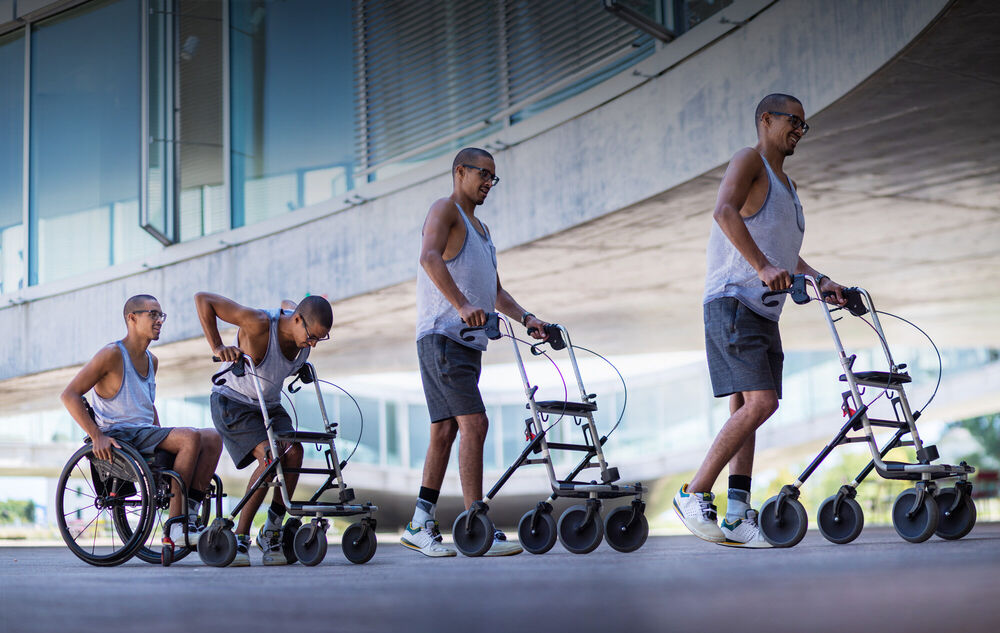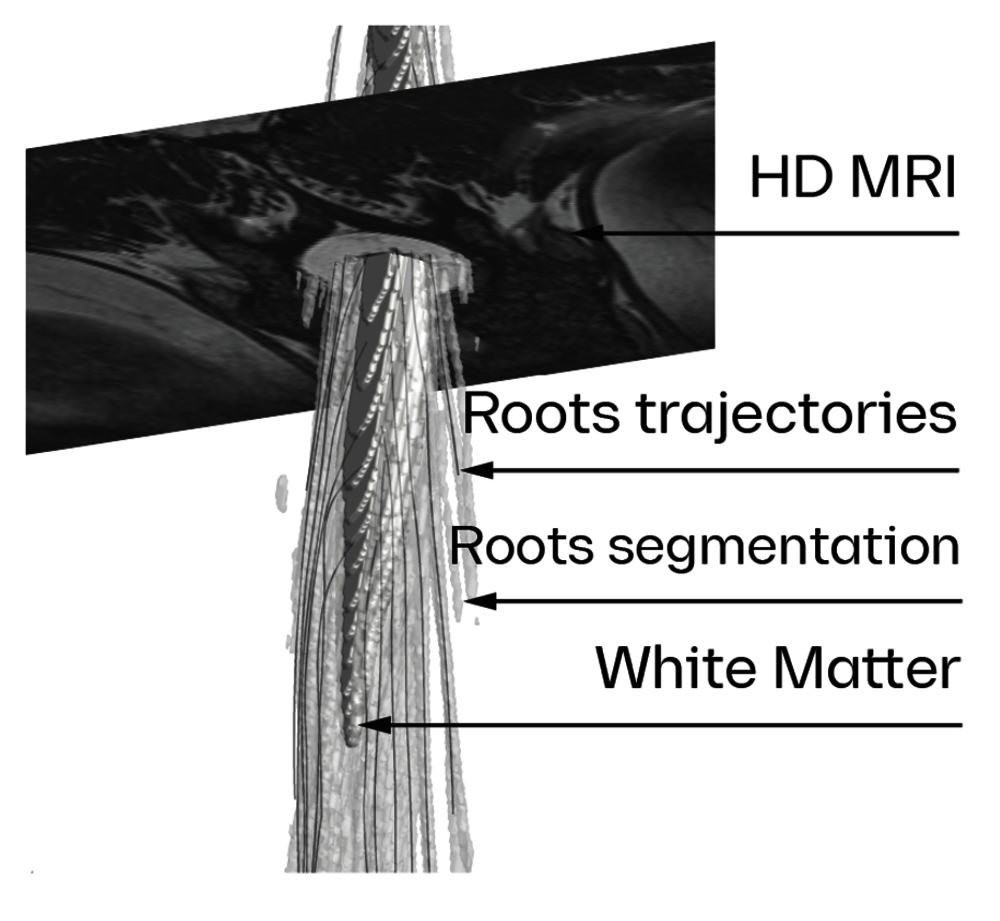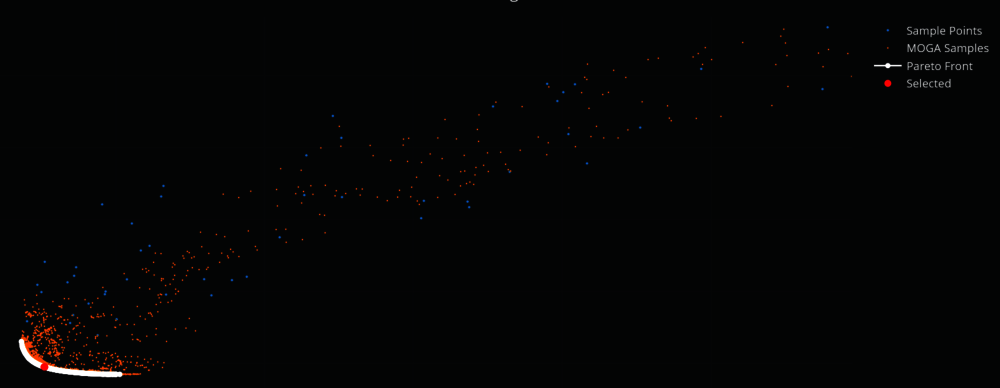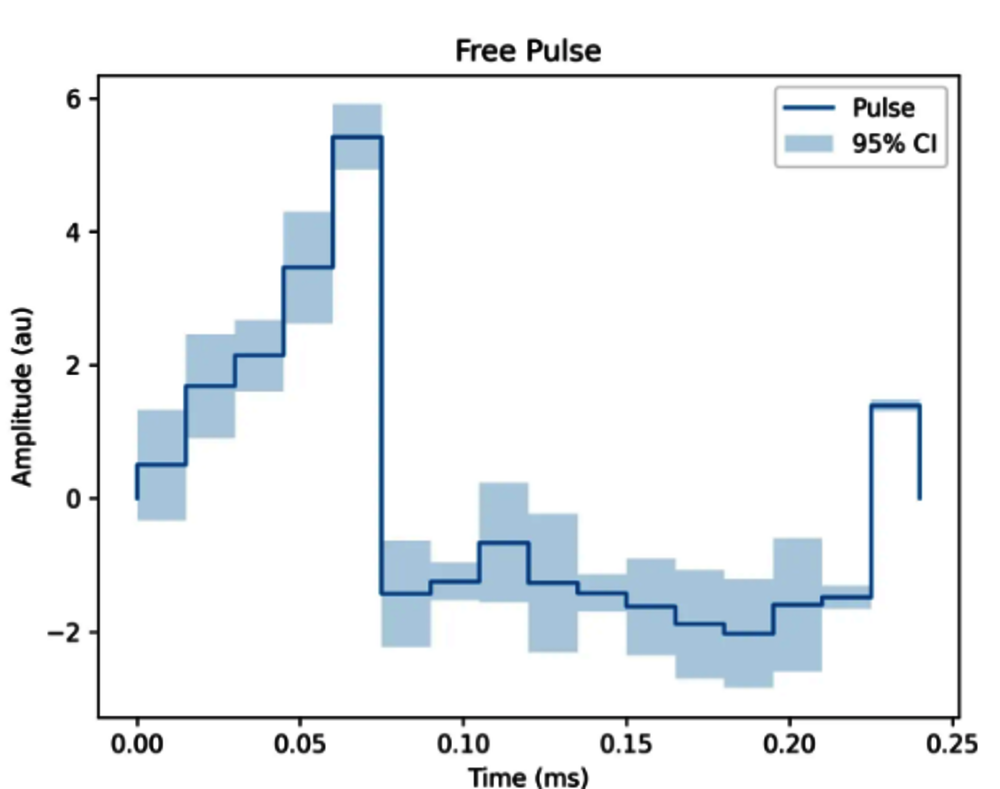Modeling Intelligence in Sim4Life.web V9.2
An Illustrative Case Study: Optimized Pulse Waveform Design for Spinal Cord Stimulation
Executive Summary
Sim4Life.web V9.2 introduces Modeling Intelligence: a suite of surrogate model-based optimization tools that allow users to rapidly simulate, visualize and evaluate solutions over multiple competing objectives. This spinal cord stimulation (SCS) case-study illustrates how Sim4Life’s Modeling Intelligence tools accelerate design decisions across parameterized biomedical workflows. In collaboration with EPFL’s .NeuroRestore and the IT’IS Foundation, we combined patient-specific spine models, validated electromagnetic (EM)–neuro simulations, and the new Multi-Objective Genetic Algorithm (MOGA) HyperTool (part of the Modeling Intelligence suite). By learning a surrogate of the high-fidelity model (SuMo) and exploring the full Pareto front, Sim4Life identified pulse shapes that maintained target fiber recruitment while cutting predicted power consumption by up to fivefold—without pre-selecting arbitrary objective weights. Cloud-native scaling, the Generalized Activating Function (GAF) [1,2] for rapid neural recruitment predictions, and interactive trade-off visualization compress weeks of trial-and-error into minutes.
Why This Matters
For chronically implanted stimulators, every milliamp matters. Higher currents increase tissue charge accumulation (a safety concern) [3], drain batteries, shorten device lifespan, and may necessitate earlier surgical replacement. The technical challenge is to maximize therapeutic recruitment while minimizing energy consumption—a classic multi-objective problem. While the example below focuses on SCS pulse waveform design, the workflow applies broadly to any parameterizable Sim4Life pipeline.
Collaboration and Context
This work builds on a long-standing partnership among EPFL’s .NeuroRestore, the IT’IS Foundation, and ZMT Zurich MedTech AG, contributing to landmark advances in spinal neurorehabilitation [4,5]. Sim4Life’s validated framework has been central to mechanism elucidation, implant design, and treatment personalization, helping teams move from weeks of manual tuning to minutes of data-driven stimulation planning.
Modeling Intelligence in Sim4Life.web V9.2 pairs high-fidelity EM–neurophysiology simulation with high-fidelity surrogates to explore large design spaces rapidly and transparently:
- MOGA HyperTool (new): A MOGA that learns a SuMo from strategically sampled, high-accuracy simulations, then explores thousands of candidates in minutes;
- Interactive Pareto fronts: See the full landscape of achievable trade-offs (e.g., efficacy vs. energy), and choose the best compromise after exploration—no pre-fixed weights required;
- GAF-powered recruitment estimates: The GAF enables ultra-fast prediction of neural activation thresholds, accelerating search while preserving biophysical interpretability [1,2];
- Cloud-native scale: Run the entire pipeline at high-performance computing scale from any device; Sim4Life.web V9.2 automatically parallelizes and manages resources.

Pipeline Overview for SCS Pulse Waveform Design
1. Personalized anatomy & neuro-functionalization
From magnetic resonance imaging (MRI) sequences optimized for spinal rootlet contrast, Sim4Life generated a patient-specific spine model using artificial intelligence (AI)-assisted segmentation and expert quality assurance. Dorsal roots were neuro-functionalized with ~1,000 axonal trajectories (types and diameters sampled from physiological distributions), enabling realistic recruitment predictions [6].
2. High-fidelity exposure & fast recruitment prediction
EM fields from multi-contact electrodes were computed and mapped onto axons. In the relevant frequency regime, superposition allows rapid recombination of precomputed fields across electrode configurations. The GAF yielded fast, accurate estimates of sub-threshold polarization and activation thresholds across axons [1,2].
3. Surrogate-assisted exploration at scale
The MOGA HyperTool performed a design-of-experiments sampling of parameterized pulse shapes (time-binned amplitude sequences) over multiple axons and electrode combinations, trained a SuMo, and then explored thousands of pulse candidates on the Pareto surface—without re-running the full simulation each time.
4. Multi-objective optimization
Objectives included maximizing recruitment of target fibers and minimizing energy/power, with charge neutrality enforced as a safety constraint. Instead of fixing objective weights in advance, decision-makers interact with the Pareto front to select the most appropriate compromise for each clinical or device scenario.

Our Results
The Pareto analysis revealed biophysically plausible but non-obvious pulse shapes that differ from standard bi-phasic squares. The identified solutions maintained target recruitment while reducing predicted power consumption by up to fivefold. Typical features included:
- Asymmetric cathodic/anodic segments shaped to respect membrane time constants [3];
- Delayed expenditure of current to limit leakage losses;
- A prolonged, low-amplitude recovery phase for charge balance with a minimal energy footprint.


Why It’s Compelling Beyond SCS
- Full transparency of trade-offs: Explore the entire front—no hidden penalties or arbitrary weights;
- Speed with fidelity: Use trusted physics to train a SuMo, then scan the design space orders of magnitude faster;
- Personalization-ready: Works end-to-end on subject-specific anatomy and neuro-functionalization;
- Operational efficiency: Cloud-native scaling means larger explorations, shorter cycles, and fewer manual iterations.
Where this generalizes: pacemaker capture vs. battery longevity; deep brain stimulation on-target efficacy vs. off-target effects; MRI radiofrequency coil homogeneity vs. safety constraints; wireless implant power transfer vs. heating limits—among others.
Get Started
- See it in action: Short demo video (Pareto navigation + pulse waveform evolution);
- Talk to an expert: Learn how to run your pipeline on Sim4Life.web V9.2;
- Read more: Validation reports and selected publications available on request.
Supported by the Personalized Health and Related Technologies (PHRT) initiative and the strategic collaboration between EPFL NeuroRestore, IT’IS Foundation, and ZMT Zurich MedTech AG.
Video Demonstration
References
[1] T. H. Newton, J. G, Ordonez, E. Neufeld, and N. Kuster, “Optimizing Spinal Cord Stimulation Using a Novel Green’s Function-Based Generalized Activating Function,” Neuromodulation, vol. 26, no. 4, p. S44, 2023.
[2] J. G. Ordonez, T. H. Newton, A. Alashqar, A. Rowald, E. Neufeld, and N. Kuster, “A Generalized Activating Function for Rapid and Accurate Neural Response Prediction in Spinal Cord Stimulation”, In Preparation
[3] J. P. Reilly, and A. M. Diamant, "Electrostimulation: theory, applications, and computational model," Artech House, 2011.
[4] F. B. Wagner et al., “Targeted neurotechnology restores walking in humans with spinal cord injury,” Nature, vol. 563, no. 7729, pp. 65–71, 2018.
[5] A. Rowald et al., “Activity-dependent spinal cord neuromodulation rapidly restores trunk and leg motor functions after complete paralysis,” Nat Med, vol. 28, no. 2, pp. 260–271. 2022.
[6] E. Neufeld, et al., "Simulation platform for coupled modeling of EM-induced neuronal dynamics and functionalized anatomical models," Neural Engineering (NER), 2015 7th International IEEE/EMBS Conference on. IEEE, 2015.
Related validation reports, available upon request from our support team
- Verification of P-EM-FDTD module
- Verification of P-EM-QS module
- Verification of T-NEURO Module